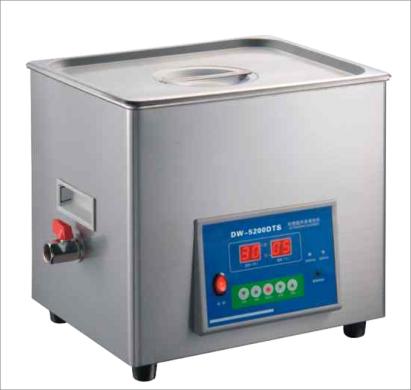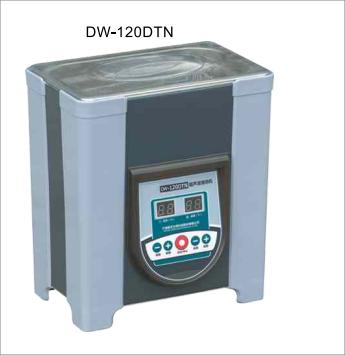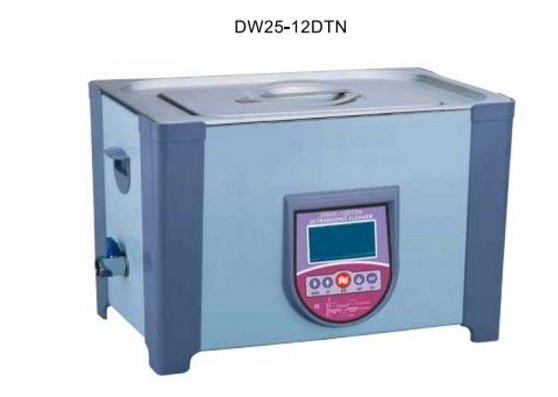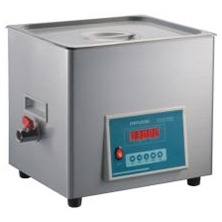An ultrasonic cleaner is a marvel of science and creativity in the field of current cleaning technologies. These gadgets use the power of sound waves to provide comprehensive and effective cleaning, outperforming traditional approaches. In this article, we’ll focus on the topic that how an ultrasonic cleaner work, delving into the workings of an ultrasonic cleaner, exploring the basic principles, the importance of cavitation in working, and the detailed process, that make ultrasonic cleaners become such potent tools for precision cleaning.

What is the Basic Working Principle of an Ultrasonic Cleaner?
Ultrasonic cleaning is a process of removing impurities from various items that use high-frequency sound waves. Cavitation is the fundamental concept of an ultrasonic cleaner that drives this technology. Cavitation is a fascinating phenomenon in which small bubbles develop and collapse within a liquid. These bursting bubbles cause small shockwaves, which dislodge and remove dirt, filth, and particulates from the surfaces of the items being cleaned.
What is Cavitation in the Working Process of an Ultrasonic Cleaner?
Cavitation is the development, expansion, and rapid collapse of microscopic bubbles or cavities inside a liquid as a result of pressure fluctuations. These bubbles are created in regions where the pressure of the liquid falls below its vapor pressure, allowing gas to dissolve into the liquid. The subsequent pressure changes cause the bubbles to rapidly expand and contract, leading to their implosion or collapse.
Cavitation is essential in the cleaning process of ultrasonic cleaners. Bubble implosion produces tremendous shockwaves and micro-jets of liquid, resulting in severe scouring action on surfaces. This scrubbing action gets into crevices, nooks, and tiny details that manual cleaning methods can’t reach. When the bubbles collapse, they cause micro-sized “explosions” that dislodge impurities and dirt from the surface of the object.

Benefits of Cavitation Ultrasonic Cleaning
Efficiency
Cavitation-induced micro-explosions provide a highly efficient cleaning mechanism that outperforms traditional cleaning approaches.
Precision Cleaning
The confined and regulated implosions of cavitation are useful at cleaning intricate and fragile things without causing damage.
Thoroughness
Cavitation’s shockwaves and micro-jets reach locations that would be inaccessible with manual cleaning, ensuring comprehensive cleaning.
Consistency
Cavitation ensures that all surfaces of the object being cleaned are cleansed uniformly, eliminating the likelihood of inconsistent cleaning outcomes.
What is the Detailed Working Process of an Ultrasonic Cleaner?
Ultrasonic cleaning is a scientific and technological symphony that orchestrates the removal of dirt, filth, and pollutants from items with accuracy and efficiency.
- Generating Ultrasonic Waves
The creation of ultrasonic waves lies at the heart of ultrasonic cleaning. This is accomplished through the use of transducers, which are frequently made of piezoelectric materials. When an electric current is passed via these transducers, they vibrate at ultrasonic frequencies (often between 20 and 40 kHz), producing sound waves that flow through the cleaning solution.
- Liquid Bath
Within the tank of the ultrasonic cleaner, the object to be cleaned is immersed in a liquid bath. The cleaning solution acts as a medium through which the ultrasonic waves propagate and cavitation occurs.
- Cavitation Formation
As the ultrasonic waves move through the liquid, they generate alternating high-pressure and low-pressure zones. During the low-pressure phases, small bubbles or cavities form inside the liquid around the surface of the object being cleaned. These bubbles are critical to the cleaning process because they cause the phenomena of cavitation.
- Cavitation Collapse
When the pressure rapidly rises during the high-pressure phase, these bubbles rupture or implode suddenly and violently. This implosion generates energy in the form of shockwaves, heat, and localized pressure spikes inside the liquid. This implosion and the ensuing shockwaves constitute the driving force behind the cleaning process.
- The Scrubbing Action
The collapsing bubbles’ shockwaves cause micro-sized “explosions” in the liquid. These micro-explosions produce a vigorous scouring action that effectively removes dirt, pollutants, and particles from the surface of the object being cleaned. The scrubbing motion does not stop at the surface; it also gets into cracks, delicate details, and difficult-to-reach regions, ensuring a thorough clean.
- Removal of Contaminants
The dislodged impurities are liberated from the object’s surface when the scrubbing operation happens. These impurities are then suspended in the cleaning solution and ready to be removed.
- Filtration and Separation
Many ultrasonic cleaning systems have filters or separators to aid in the capture and removal of pollutants from the cleaning solution. This prevents impurities from resettling on the object’s surface during the cleaning procedure.
- Rinse and Drying
Following the completion of the ultrasonic cleaning cycle, the object is normally washed to eliminate any residual cleaning solution and pollutants. Depending on the object and the application, it may then be dried to ensure it is ready for use or further processing.

Conclusion
Ultrasonic cleaners provide remarkable precision cleaning that tackles the complexities of our modern environment by harnessing the power of sound waves and cavitation. As the science of ultrasonic cleaning advances, these machines will likely become even more important in businesses that require exacting cleanliness and efficiency.

